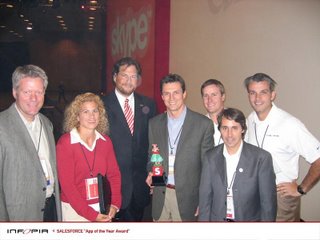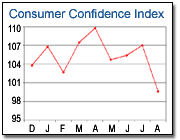Guy Kawasaki's latest post -
The Venture Capital Aptitude Test (VCAT) - is, as usual, thought provoking and worth reading.
The post, stimulated by repeated emails from MBAs to Guy seeking advice on how to get into the VC industry, makes the argument that great VCs require entrepreneurial experience and that a VC position should be the capstone, not the start of a business career.
When you're young, Guy argues, work 80 hours a week building, marketing, and selling products not sitting in meetings deciding whether or not to make an investment.
As a relatively young VC (35), the post hit a nerve. The post also forced me to revisit a set of questions that I struggled with when I first joined the industry: 1) is VC a vocation, in its own right, with discrete skill sets and capabilities or 2) is VC something people do after they have been successful doing something else?
Even if there is no clear answer to the question, is one path more closely correlated with investing success than another? Are great VCs graying entrepreneurs or are they experts in the VC domain with several decades of pattern recognition, tens of deals, and hundreds of diligence sessions behind them?
In 2001, following the sale of the start-up where I was CEO, I made the rounds of Sand Hill Road asking those very questions and worked hard to find a common answer. The jokes about the "dark side" aside, I remember feeling serious disquiet when I decided to join
Pequot Ventures. In doing so, I felt that I was somehow selling out and walking away too early from the managerial and entrepreneurial track.
While the itch to build and sell a product has never left, I have grown more comfortable with the notion that there is no stock answer to the questions above. Examples of successful investors can be found from both tracks and as the old saying goes, "there are many roads to Rome."
I know great entrepreneurs who, while perhaps empathetic and experienced in managing start-up growth, are not very value-added in the board room. And I know of people who got into the business right out of business school who suffer from the arrogance and vapidity that Guy describes in his post.
One observation is that the VC industry, by its nature, is one where it takes many years to find out if one is any good. In fact, Guy himself refers to his personal challenge in this regard. If deals take 5 years to get liquid and if it takes one several years to get into the position to sponsor and lead investments, then it will be a minimum of 7 years before one can objectively comment on one's venture capital aptitude. Given the time it takes to evaluate talent, firms hire by proxy and look for leading indicators of that latent talent. These proxies lead to the stereotypes of the CS grad, start-up founder, EE. Prior success in related fields is used as a guesstimation and predictor of investment talent.
Certainly, by pursuing a start-up or large company management role, the ability to point to success and claim attribution or causality for success is much easier. From shorter cycle times to achieve one's goals and the accountability and responsibility that comes from owning a product or project, it is possible to more quickly grow in self-confidence and credibility. Start-up roles of note help provide firms comfort with evidence of the proxies and predictive variables note above. Given the seven year horizon and long gestation of venture aptitude, the VC business is an apprentice business that takes patience and that can be frustrating for people, me included, out to conquer the world.
Several years ago, while still tortured with these questions, I sat down with one of my favorite people and a very successful entrepreneur. I approached the meal with great trepidation as I was going to tell him that I loved being a VC and wanted to make it my career choice. After I got through telling him how much I loved the job, he shocked me. Rather than belittling my choice and dumping on the profession, he walked me through the following. He said, "there are too many lawyers, doctors, venture capitalists, sales people, professors - in fact almost every profession suffers from an oversupply of wannabes. The problem is that there are never enough good ones. Be a good one."
When I asked him to clarify the meaning of "good," he replied someone who works to serve the entrepreneur, to shorten the cycle time to achieving milestones, and someone who the CEO wants to call in the middle of the night with a burning question or problem. Since then, that has been my goal;to be good by working to serve rather than expecting to be served.
The reality is that firms hire in their own image - firms full of entrepreneurs will continue to look to mature business leaders to fill their ranks, while firms that are built on the back of hiring and training MBAs will continue to do so. At H
ummer Winblad, we ascribe to the portfolio approach. We have both wonderful senior executives, the very model of Guy's "good VC," and career VCs - the combination of operating experience and the pattern recognition that comes from having been in the industry a long, long time helps eliminate blind spots and, I believe, makes for better collective decision making.
Finally, I think Guy is right to caution industry entrants and to ask that they join the industry for the right reasons - a love of technology, endless curiosity, a desire to serve and accelerate growth, and a passion for what you do every day.





